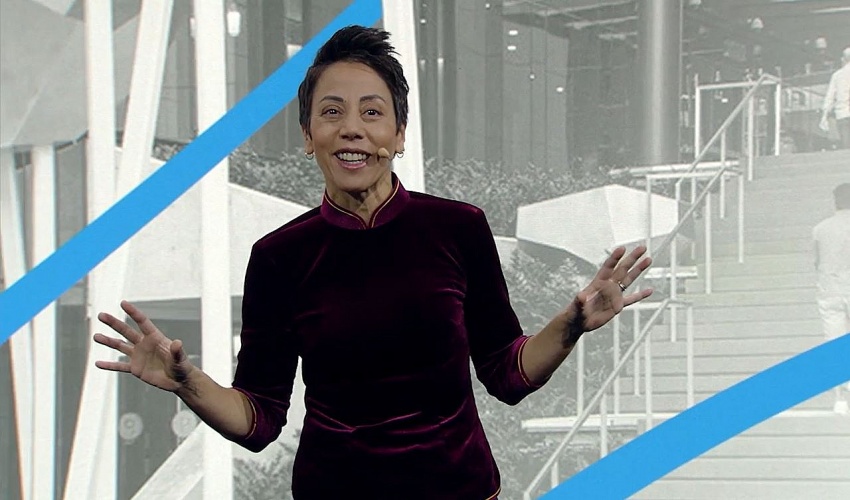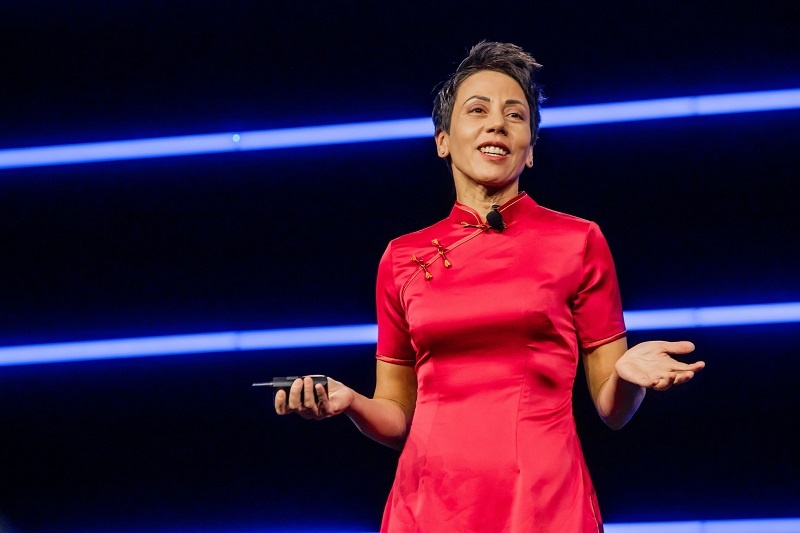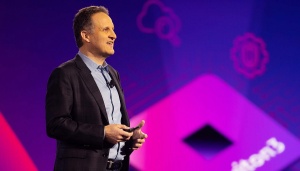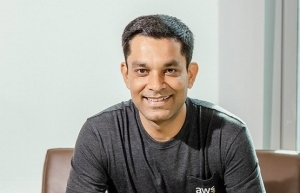Mai-Lan Tomsen Bukovec and the key to making successful women leaders
Working as vice president of Technology at Amazon Web Services for 13 years, what are the biggest highlights of your career there so far?
Looking back at when I first joined AWS in 2010, the things that genuinely interested me and have kept me here for 13 years – and for hopefully many more – are the leadership principles.
 |
| Mai-Lan Tomsen Bukovec, vice president of technology at Amazon Web Services |
I've never worked anywhere where a company has been so focused on leadership principles that guide how you behave, how you think, and how you operate. Take Customer Obsession, for example. This principle suggests a leader starts with their customers and works backwards to come up with a solution to meet their needs.
Another leadership principle is called Are Right, a Lot, which says a leader must seek diverse perspectives and work to disconfirm their beliefs.
Now, over 90 per cent of our roadmap for AWS actually comes from what customers ask for, while the remaining 10 per cent are the ideas that we come up with to solve problems that we see customers dealing with. But the element of how you behave every day, when you come to work, and how you actively look for other people to help you develop an idea has been one of the most profound values since I started in 2010.
Over the past thirteen years, there have been many projects that I'm very proud of. One example was in 2018 when we announced Amazon S3 Intelligent-Tiering, which gives customers automatic cost savings when their data access patterns change. Two other notable launches were Amazon S3 Glacier Deep Archive and Amazon S3 Glacier Instant Retrieval. These types of changes, again, began from the problems that customers are looking to solve.
We have one customer in the United States, FINRA, which is a regulatory body for the US securities industry. They were able to grow their data several-fold between 2019 and 2021, and they dropped the unit cost of their data storage by half. When you can make significant changes like that for customers, it gets us very excited.
You have worked on cloud transformation for years and made great achievements at AWS. What first ignited the passion for technology in you? How have you kept it?
It was the period after university when I joined the US Peace Corps. The Peace Corps is a non-profit organisation that trains and deploys volunteers to different parts of the world to provide developmental assistance. I went to live in the Mopti region of Mali in West Africa to work as a Forestry volunteer where I focused on village projects. You're there to help your customers, who are the Malians that you work with every day on projects.
During my time there back in 1994, I realised that the people who had a little bit of technology, such as a satellite phone, had a big advantage over others because they could communicate over long distances to gain access to the resources that they needed. That piece of technology was a big game changer which helped their family and those they were close to them in the community.
When I got back to the United States, I got into technology because of the impact it can have on people's lives, transforming their day-to-day experiences for the better.
What is the key to your success?
For me, the key to success is being fully present and being my best self at every moment. I'm a mom, and when I'm with my kids, I'm 100 per cent present with them and for them. When I'm with my team, I'm 100 per cent with them as well.
When you make the most of every moment that you have, you don't regret the moment that you missed, and you never say, "I wish I had more hours in a day."
 |
| Mai-Lan Tomsen Bukovec, AWS Vice President of Technology, speaking at re:Invent 2022 |
There are ups and downs in everyone’s life, and you have clearly made some big gains at AWS. What have been your biggest losses and challenges?
We pride ourselves in our operational performance. When we do not deliver on that, we work harder to deliver on better performance because we have a deep sense of ownership and commitment to customers. And if something does not go well for our customers, we feel that very deeply. I would not call it a loss, it's a learning experience.
Regarding challenges, one example is how we evolved Amazon S3 as a cloud storage system to work with Hadoop and other analytics. That meant we needed to make some changes that I knew were going to be challenging. For example, when Amazon S3 was first built almost 17 years ago, it was eventually consistent, which is what our customers wanted for their Hadoop ecosystem. It was complicated to build at our scale and without any changes to price or performance, but we did it because our goal is to evolve our services based on what customers want.
Besides you, AWS has a number of other successful female leaders. How does the company’s culture and commitment cultivate and promote women leaders?
At AWS, we believe our future is inclusive, diverse, and equitable across every race identity, gender identity, belief, origin, and community. That’s why we’re taking a purposeful approach to cultivate a culture of inclusion, and to hire, retain, and advance more diverse talent. Amazon requires employees to take mandatory inclusion training, regularly reviews its employment data to identify any pay imbalances or unusual attrition across demographics, and works hard to increase the number of underrepresented employees and leaders in the organisation.
Our culture is defined by our Leadership Principles, and our newest Leadership Principle, Success and Scale Bring Broad Responsibility, reminds us that we must support our teams, customers, partners, local communities, and the world at large to do better and be better.
In order to really drive diversity and inclusion in an environment, I think you need initiatives to come from two places – your leadership and the individuals on your team.
We do a couple of things. One is that we create listening circles where you have a group of women engineers who are in the early part of their careers, and we'll arrange for them to sit with our general managers or vice presidents and share with them what it's like to be a woman engineer. That type of listening circle is incredibly important and part of making sure that our leaders understand the experiences of the diverse populations, and hear from them what they need to feel more included.
The second thing we do across the company is what we call women's circles or women's groups. We bring together these communities of women of all different levels and roles, including managers, engineers, and programme managers, to do various activities together. Sometimes, we might bring in a trainer to work with them on their speaking skills. Other times, we will all cook a similar recipe together. Even during the pandemic, we connected online and everyone came on camera with their pots and pans to cook together on screen – it was a lot of fun.
These circles are an opportunity for me to connect with my female colleagues and hear about their successes and challenges. It is an opportunity for women to come together as a group to celebrate and share advice.
As a female senior executive at AWS, have you ever done any specific activities or had ideas to help promote women leaders in the company?
Across the company, there are two areas where I help out. In one area, I'm an executive advisor to Asians@Amazon, which is one of 13 affinity groups at Amazon. As an executive advisor, I work with different Asian leaders across the company and I help give advice on training programmes that help Asian workers advance their careers and develop social connections. I spend a lot of time with our Asians@Amazon leaders, and I am very proud of them.
The other thing I do is that I mentor a number of female leaders at different levels across the company. I will discuss my experience as a woman to let others know that they can be a working mom. They can raise children and also be a senior leader of a tech firm. At Amazon, they can achieve as a mom and as a technology innovator.
Being part Vietnamese, what do you hope to bring to Vietnam, where we are witnessing an acceleration in digital transformation? Have you ever worked on any specific products for Vietnam?
You cannot have a digital transformation without a cultural transformation, and we are working hard to accelerate this in Vietnam with our customers – which include government agencies, startups, and banks. Among other activities, we are also focused on training Vietnamese with cloud skills to create a more productive and efficient workforce.
For example, Techcombank is a pioneer in Vietnam by being one of the first banks to adopt cloud computing. They had the foresight to recognise that Cloud Skills are critical to its success and worked with AWS to train and upskill more than 2,800 employees on AWS Cloud. As a result, the bank accelerated its cloud adoption and transformation journey, reducing provisioning time by 90 per cent and average monthly application costs by more than 30 per cent, all while fostering a culture of innovation.
We're going to continue to focus on working with industries like financial services and telecoms in Vietnam. A lot of what we're also trying to do is to work with local partners and startups. We work through our AWS partner network to try to build out the cloud skills in those areas, and we offer free skills training programmes through AWS Skill Builder to upskill the existing workforce at scale. There are currently 61 courses offered in Vietnamese.
There's going to be a lot of adoption of the cloud in Vietnam in the coming years. Our goal is to be here to help support it from a culture and skills perspective, as well as a technology one. As someone with Vietnamese heritage, I am proud of the innovation happening in the country and can’t wait to see what Vietnamese innovators and entrepreneurs will do next with the AWS cloud.
 | AWS announces new innovations With a number of new innovations announced, Amazon Web Services (AWS) has affirmed its strong partnership with the global business community in digital transformation. |
 | Assisting startups to survive the tech winter Gaurav Arora, director and head of Startup Business, Amazon Web Services, Asia-Pacific and Japan gives his insights. |
 | Cybersecurity Predictions 2023: New industry frontiers One of the greatest challenges for cybersecurity teams is the constantly shifting security landscape. Evolving geopolitics, the resulting tension between economic progress and security, and the perceived cyber threat drive a lot of the negative perceptions around cybersecurity. |
 | AWS announces Amazon Security Lake Amazon Web Services has a programme that automatically centralises an organisation’s security data from cloud and on-premises sources into a purpose-built data lake so customers can act on security data faster. |
What the stars mean:
★ Poor ★ ★ Promising ★★★ Good ★★★★ Very good ★★★★★ Exceptional
Themes: Empowering Women
- Female influence still to be attained
- Shaping Vietnam's corporate future: female board members show business excellence
- Nestlé Vietnam contributes to elevating the role of women across the supply chain
- Empowering female leaders in tech: insights and aspirations shared at KPMG Tech Innovator 2023
- Brighter Path programme hosts empowerment meeting for ethnic minority girls
Related Contents
Latest News
More News
- Retailers turn to AI and automation as shopper satisfaction slips (December 19, 2025 | 08:00)
- IBTE 2025 spotlights opportunities in Vietnam’s baby product and toy industry (December 18, 2025 | 17:23)
- Climate Finance Accelerator Vietnam begins search for projects seeking investment (December 18, 2025 | 17:22)
- Vietnam and Switzerland conclude SwissTrade (December 17, 2025 | 18:22)
- TECHFEST Vietnam 2025 links startups with policy and capital (December 15, 2025 | 18:21)
- MST to allocate $3.8 billion for sci-tech in 2026 (December 15, 2025 | 18:10)
- Long Thanh International Airport welcomes first Vietnam Airlines test flight (December 15, 2025 | 18:01)
- Health Innovation Hub: accelerating health equity through digital healthcare innovation (December 15, 2025 | 08:00)
- Vietnam’s first AI Law to take effect from March 2026 (December 12, 2025 | 09:00)
- Chi Communications joins SEA CAN alliance (December 11, 2025 | 17:39)

 Tag:
Tag:

























 Mobile Version
Mobile Version